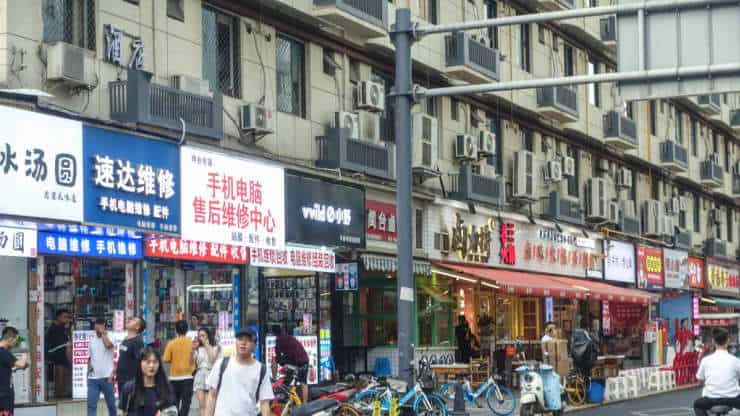BEIJING — China reported Tuesday better-than-expected growth in retail sales, fixed asset investment and industrial production to start the year.
The data releases combine the two months of January and February as is the Chinese statistics bureau custom to avoid distortions from the Lunar New Year holiday, which can fall in either month depending on the year.
Retail sales grew by 6.7% year-on-year, topping expectations of analysts polled by Reuters for growth of 3% from a year ago. Furniture was the only category within retail sales to decline, down 6%. Petroleum products and gold, silver and jewelry saw the greatest increases.
Steady growth in auto sales — after declines for much of last year — helped boost retail sales, as well as consumer demand around the Lunar New Year holiday and interest in Olympics-related products, Fu Linghui, spokesperson of the National Bureau of Statistics, told reporters at a press conference Tuesday.
He noted, however, that recent Covid outbreaks would likely restrict consumption in certain areas, and the foundation for recovery in consumer spending is still not strong.
“Certainly, achieving the full-year target of around 5.5% will require arduous effort,” Fu said in Mandarin, according to a CNBC translation.
Industrial production also beat, up by 7.5% versus expectations of 3.9% growth.
Fixed asset investment rose by 12.2%, well above the forecast for a 5% increase. Within fixed asset investment, that in high-tech manufacturing saw one of the largest increases, up by 42.7%. Infrastructure investment grew by 8.1%. Investment in real estate development rose by 3.7%, even as commercial floor space sold fell by 9.6%.
The real estate sector — which contributes to about a quarter of GDP — has slumped since Beijing began a crackdown on developers’ high reliance on debt in the last two years.
Sian Fenner, lead Asia economist at Oxford Economics, said on CNBC’s “Street Signs Asia” that she expects increased fiscal spending will boost infrastructure development, but not enough to offset the slowdown in real estate. She anticipates the stimulus will work through the economy, enough to boost growth to an expected 4.9% this year and to near 5.4% next year.
The unemployment rate in cities edged up to 5.5% in February from January, with that of those aged 16 to 24 remaining far higher at 15.3%.
“The national economy sustained steady recovery, the production demand grew fast, employment and prices were generally stable, new driving forces continued to develop, and high-quality development made new progress,” the statistics bureau said in a statement.
Last week, China’s central government announced an official GDP target of “around 5.5%” for the year.
Many economists said the target is ambitious, especially after a resurgence in Covid cases forced factories to halt production.
Iris Pang, chief economist for Greater China at ING, said Tuesday on CNBC’s “Squawk Box Asia” ahead of the data release that she is considering a downward revision of her 6.8% GDP forecast because of the Covid situation.
The new restrictions hit major cities like Shenzhen and Shanghai in the worst wave of the pandemic the country has seen since the initial shock just over two years ago.
Those developments will affect the economic recovery at a local level, but not so much at a national level, NBS’ Fu said.
But he cautioned that many risks for growth remain in the year ahead.
“The international environment is rather complex and severe,” he said. “In particular, the Russia-Ukraine military conflict and geopolitical tensions have caused high volatility in international commodity prices, and their impact on domestic production cannot be ignored.”
— CNBC’s Charmaine Jacob and Chelsea Ong contributed to this report.

